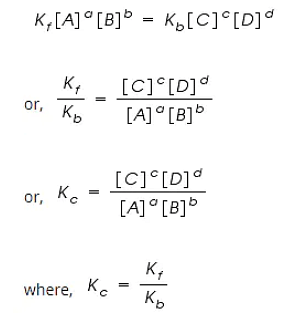For a complex number $z$, let $Re(z)$ denote the real part of $z$. Let $S$ be the set of all complex numbers $z$ satisfying $z^{4}-|z|^{4}=4 i z^{2}$, where $i=\sqrt{-1}$. Then the minimum possible value of $\left|z_{1}-z_{2}\right|^{2}$, where $z_{1}, z_{2} \in S$ with \(Re\left( z _{1}\right)\)\(>\)0 and \(Re\left( z _{2}\right)\) \(<\) 0, is ______
Correct Answer: 8
Solution and Explanation
\(|z_1 – z_2|^ 2 = 8\)
Top Questions on Complex numbers
- If \( z = x + iy \) is a complex number such that \( |z - 1| = |z + 1| \), then the locus of \( z \) represents:
- BITSAT - 2025
- Mathematics
- Complex numbers
- If \( z = 2(\cos 60^\circ + i \sin 60^\circ) \), find the value of \( z^3 \).
- BITSAT - 2025
- Mathematics
- Complex numbers
- If the locus of $ z \in \mathbb{C} $, such that $ \text{Re} \left( \frac{z - 1}{2z + i} \right) + \text{Re} \left( \frac{ \bar{z} - 1}{2 \bar{z} - i} \right) = 2, $ is a circle of radius $ r $ and center $ (a, b) $, then $ \frac{15ab}{r^2} \text{ is equal to:} $
- JEE Main - 2025
- Mathematics
- Complex numbers
- Among the statements: (S1): The set $ \{ z \in \mathbb{C} - \{-i\} : |z| = 1 \text{ and } \frac{z - i}{z + i} \text{ is purely real} \} $ contains exactly two elements.
(S2): The set $ \{ z \in \mathbb{C} - \{-1\} : |z| = 1 \text{ and } \frac{z - 1}{z + 1} \text{ is purely imaginary} \} $ contains infinitely many elements. Then, which of the following is correct?- JEE Main - 2025
- Mathematics
- Complex numbers
- Let the product of $ \omega_1 = (8 + i) \sin \theta + (7 + 4i) \cos \theta $ and $ \omega_2 = (1 + 8i) \sin \theta + (4 + 7i) \cos \theta $ be $ \alpha + i\beta $, where $ i = \sqrt{-1} $. Let $ p $ and $ q $ be the maximum and the minimum values of $ \alpha + \beta $ respectively.
- JEE Main - 2025
- Mathematics
- Complex numbers
Questions Asked in JEE Advanced exam
- Consider the vectors $$ \vec{x} = \hat{i} + 2\hat{j} + 3\hat{k},\quad \vec{y} = 2\hat{i} + 3\hat{j} + \hat{k},\quad \vec{z} = 3\hat{i} + \hat{j} + 2\hat{k}. $$ For two distinct positive real numbers $ \alpha $ and $ \beta $, define $$ \vec{X} = \alpha \vec{x} + \beta \vec{y} - \vec{z},\quad \vec{Y} = \alpha \vec{y} + \beta \vec{z} - \vec{x},\quad \vec{Z} = \alpha \vec{z} + \beta \vec{x} - \vec{y}. $$ If the vectors $ \vec{X}, \vec{Y}, \vec{Z} $ lie in a plane, then the value of $ \alpha + \beta - 3 $ is ________.
Let $ a_0, a_1, ..., a_{23} $ be real numbers such that $$ \left(1 + \frac{2}{5}x \right)^{23} = \sum_{i=0}^{23} a_i x^i $$ for every real number $ x $. Let $ a_r $ be the largest among the numbers $ a_j $ for $ 0 \leq j \leq 23 $. Then the value of $ r $ is ________.
- JEE Advanced - 2025
- binomial expansion formula
- The total number of real solutions of the equation $$ \theta = \tan^{-1}(2 \tan \theta) - \frac{1}{2} \sin^{-1} \left( \frac{6 \tan \theta}{9 + \tan^2 \theta} \right) $$ is
(Here, the inverse trigonometric functions $ \sin^{-1} x $ and $ \tan^{-1} x $ assume values in $[-\frac{\pi}{2}, \frac{\pi}{2}]$ and $(-\frac{\pi}{2}, \frac{\pi}{2})$, respectively.)- JEE Advanced - 2025
- Inverse Trigonometric Functions
A temperature difference can generate e.m.f. in some materials. Let $ S $ be the e.m.f. produced per unit temperature difference between the ends of a wire, $ \sigma $ the electrical conductivity and $ \kappa $ the thermal conductivity of the material of the wire. Taking $ M, L, T, I $ and $ K $ as dimensions of mass, length, time, current and temperature, respectively, the dimensional formula of the quantity $ Z = \frac{S^2 \sigma}{\kappa} $ is:
- JEE Advanced - 2025
- Dimensional Analysis
- Let $$ \alpha = \frac{1}{\sin 60^\circ \sin 61^\circ} + \frac{1}{\sin 62^\circ \sin 63^\circ} + \cdots + \frac{1}{\sin 118^\circ \sin 119^\circ}. $$ Then the value of $$ \left( \frac{\csc 1^\circ}{\alpha} \right)^2 $$ is \rule{1cm}{0.15mm}.
- JEE Advanced - 2025
- Some Applications of Trigonometry
Concepts Used:
Law of Chemical Equilibrium
Law of Chemical Equilibrium states that at a constant temperature, the rate of a chemical reaction is directly proportional to the product of the molar concentrations of the reactants each raised to a power equal to the corresponding stoichiometric coefficients as represented by the balanced chemical equation.
Let us consider a general reversible reaction;
A+B ↔ C+D
After some time, there is a reduction in reactants A and B and an accumulation of the products C and D. As a result, the rate of the forward reaction decreases and that of backward reaction increases.
Eventually, the two reactions occur at the same rate and a state of equilibrium is attained.
By applying the Law of Mass Action;
The rate of forward reaction;
Rf = Kf [A]a [B]b
The rate of backward reaction;
Rb = Kb [C]c [D]d
Where,
[A], [B], [C] and [D] are the concentrations of A, B, C and D at equilibrium respectively.
a, b, c, and d are the stoichiometric coefficients of A, B, C and D respectively.
Kf and Kb are the rate constants of forward and backward reactions.
However, at equilibrium,
Rate of forward reaction = Rate of backward reaction.

Kc is called the equilibrium constant expressed in terms of molar concentrations.
The above equation is known as the equation of Law of Chemical Equilibrium.